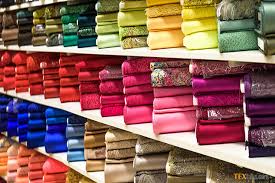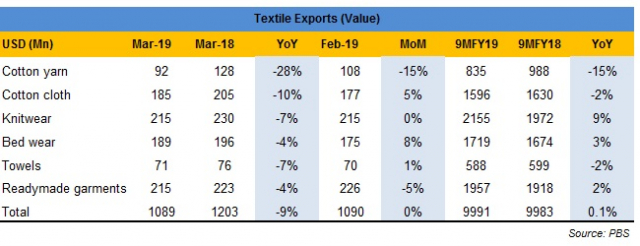Those betting on textile export numbers to show some improvement would be disappointed on the recent export data revealed by the Pakistan Bureau of Statistics (PBS). While the 2HFY19 was expected to be slightly better, the 9MFY19 numbers indicate that the full year textile exports for FY19 would be similar to what they were last year.
The 9MFY19 numbers saw negligible change in overall exports on the back of a 15 percent dip in cotton yarn and lackluster single-digit growth across most other segments. The star performer for the 9MFY19 period continued to be knitwear which registered an increase of 9 percent on a year on year basis.
It should be noted that post currency depreciation, exports have increased in volume terms. For example, readymade garments increased by 28 percent for the 9MFY19 period on a yearly basis but on a value basis only increased by 2 percent indicating lower per unit prices for the current period.

Moreover, textile exports for Mar-19 registered a decrease of almost 10 percent on a yearly basis which was the lowest monthly number since May-17. The decrease could be attributed to dismal yarn exports which fell by 28 percent on as compared to Mar-18 mainly due to less demand from China amidst US trade tensions and good domestic demand.

Even though the cost of production has come down for textile exporters, it would seem that it has not started translating in increased exports so far. Major demands had included reducing utility rates which has been met by the government. The liquidity issues pertaining to stuck pending refunds including rebates and sales tax refunds have also started being released in the form of promissory notes.
The recent Pak-China FTA revision will likely be beneficial in increasing textile exports given that there is finally duty free access for Pakistan’s exports in key segments much like ASEAN countries. More on this later. But skill development, modern production techniques, product diversification and new market development strategies need to be rolled out by major textile players. The SME textile cluster particularly readymade garments needs to be bolstered and the focus should be on scalability of these firms.






















Comments
Comments are closed.